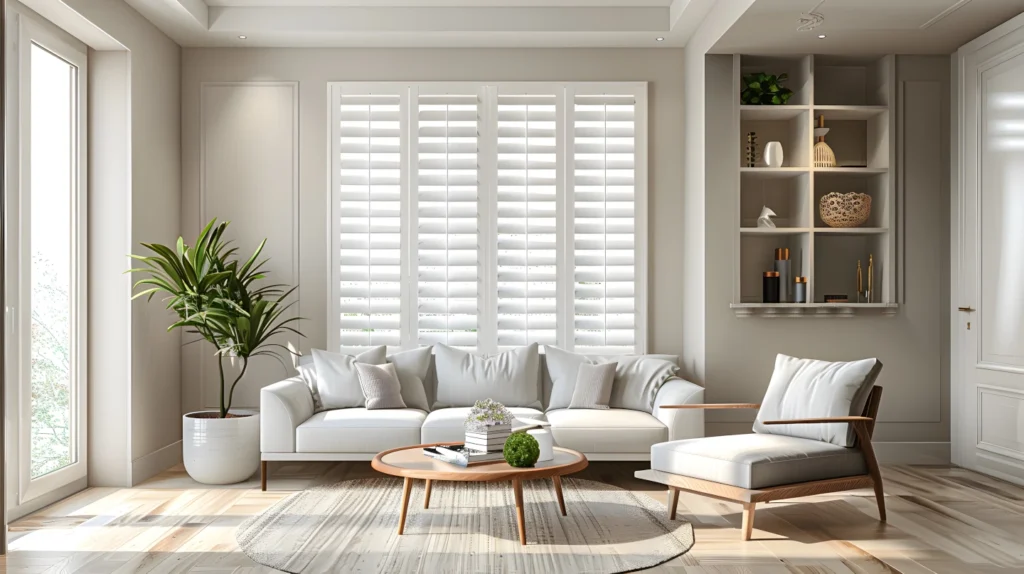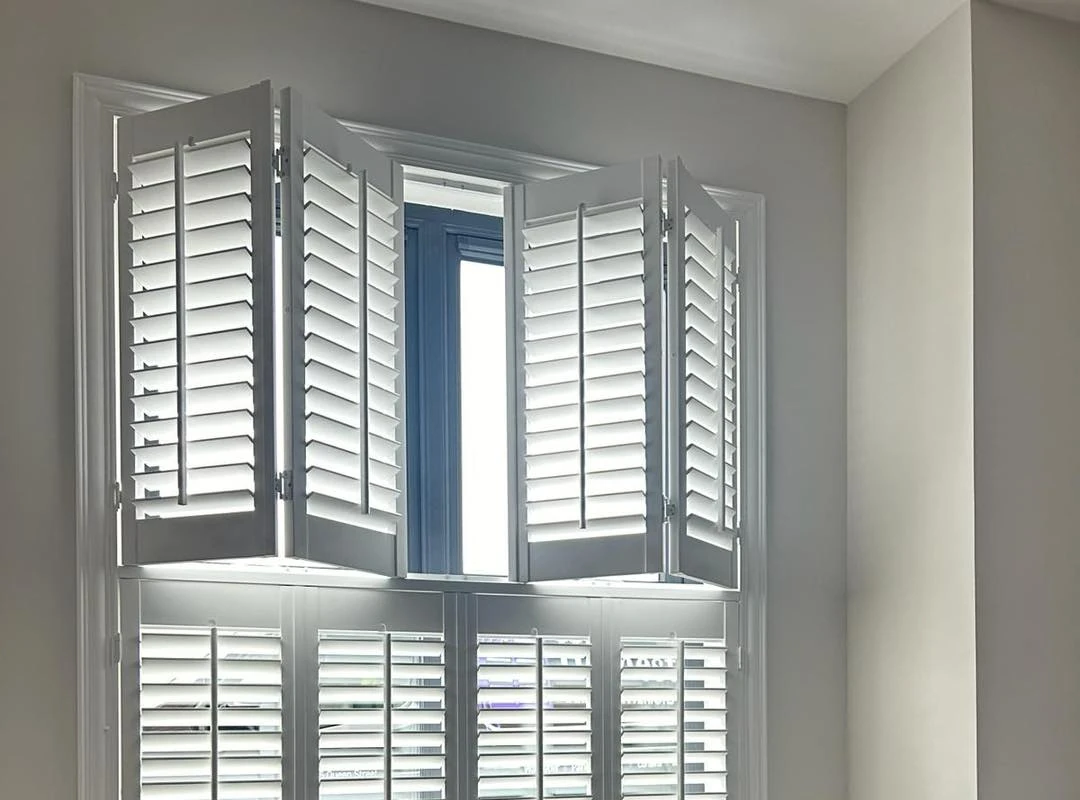How Shutters Act as Thermal Barriers
Windows are a major weak point for heat loss. Cold air slips in and warm air leaks out. Shutters provide an additional layer that:
- Create a layer of trapped air between the glass and the shutter panels. This acts as insulation, slowing down heat transfer.
- Block drafts better than plain curtains or blinds when made to measure and fitted properly, sealing edges and corners so there are no gaps.
- Help regulate temperature by letting in light and warmth during the day, then closing up tight when evening falls.
Studies and industry sources have shown that appropriate window coverings, including interior shutters, can significantly reduce heat loss through windows.
What Kind of Shutters Work Best for Heat Retention
If keeping the warmth in is a priority, consider these when choosing shutters from Homestyle Blinds and Interiors:
| Feature | Why It Helps |
| Full Height Shutters | They cover the entire window, reducing exposed glass and framing, which are common points of heat escape. |
| Solid Panels or Fewer Louvres | Panels that are less open block more of the cold. Solid panel styles are especially good in places where you want maximum insulation and privacy. |
| High Quality Wood or Faux Wood | Wood naturally insulates, and faux wood offers similar benefits with greater resistance to moisture, which is useful in kitchens and bathrooms. Dense materials reduce thermal transfer. |
| Close Fit and Good Seals | Any gaps around the frame or between panels let warm air out. A precision fit and quality hinges or fittings can make a big difference. |
Tips to Maximise Thermal Performance of Shutters
Here are practical ways to get the most insulation benefit from your shutters:
- Use natural daylight: Leave shutters open during sunny daytime hours. The sun’s warmth helps heat the room naturally.
- Close shutters before sunset: Once it gets dark and cooler, shutting them up keeps warm air inside and blocks the chill.
- Pair with curtains or thermal blinds: Especially over very cold windows, layered window coverings such as shutters and thick curtains can significantly reduce heat loss.
- Maintain good seals: Check for gaps, warping, or loose hinges. A tight frame and proper installation are vital. If needed, use weather strip or draft exclusion measures.
- Work in unison with glazing: Double glazing plus shutters often results in better insulation than either alone. Older windows benefit especially.
Energy Efficiency, Comfort and Cost Savings
Using shutters for insulation is not just about comfort. It also has long-term benefits:
- Less dependence on heating means lower energy bills.
- More stable room temperatures, avoiding cold spots and maintaining overall warmth.
- Reduced draughts improve air quality and reduce chills near windows.
High-quality shutters add value to a home both in terms of style and functionality.

Final Thoughts
So, do shutters keep heat in? Yes. When they are well designed, well fitted, and chosen with insulation in mind, they make a real difference. For homeowners in the UK, especially in regions with colder winters, investing in Homestyle Blinds and Interiors shutters can be both stylish and practical. It is a simple upgrade with noticeable payoff in comfort, cosiness, and energy savings.

